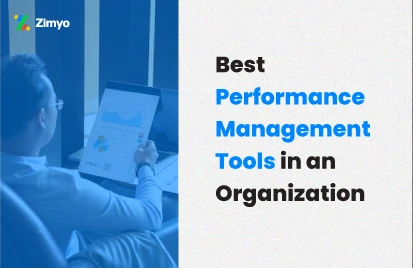Employee Performance Appraisal is a crucial process that involves the evaluation or assessment of an employee’s performance against the expectations set out by the organization. This process helps to boost the productivity of the employees and improves the overall success of the organization, as it encourages efficient and effective teamwork.
What are Performance Appraisals?
Performance appraisals outline the core competencies that an organization expects out of its employees. Performance appraisals are often provided by the immediate supervisor or manager of the employee with constructive feedback based on the employee’s performance.
The appraisal helps to provide the employee with the guidance that he/she needs for improving and developing in his/her job. Besides, a performance appraisal provides an opportunity for the organization to recognize the achievements of the employees and encourage them to work to their fullest potential shortly.
Benefits of Performance Appraisal:
- With a performance appraisal, a company will be able to define the organization’s goals clearly.
- Effective feedback can be given to all the employees. It will motivate them to improve their skills and perform better.
- The performance and productivity of employees are increased.
- The training and development needs of the organization are spotted.
- Motivating the employees leads to a high employee retention rate.
Top performance appraisal methods
Performance appraisal methods are used by employers to boost the morale of their employees. The need for performance appraisal has increased after the pandemic. Below are the top performance appraisal methods that employers use to cheer their employees up:
Management By Objectives (MBO)
Management by objectives is the appraisal method where managers and employees of an organization sit together, plan, communicate, and organize the business objectives to focus on during a specific appraisal period. After setting these goals, the managers and subordinates of the company periodically decide and discuss the progress made to control and debate on the feasibility and possibilities of achieving those set objectives.
Through this performance appraisal method, organizational goals are matched with the objectives of employees. These objectives are also validated using the SMART method to see if the set objectives are specific, measurable, achievable, realistic, and time-sensitive.
At the end of every quarterly, half-yearly, or annual review period, the employees of the organization are judged based on the results they get. Successful results and performance of the employees are appreciated and rewarded with a promotion and salary hike, while the failure of the same is dealt with a transfer or further training.
Psychological Appraisal
The psychological appraisal method assesses the employee’s potential for future performance and does not make a judgment based on their past performances. It focuses on the emotional, intellectual, and personal characteristics of the employees that are affecting their performance.
In this method, several qualified psychologists conduct various tests on the employees including a detailed interview, psychological test, and private tests that aim to identify their mental stability and other characteristics that have a possible effect on their performance.
This is the most suitable method for the workforce today. This method seeks to understand the psychological challenges faced by the employees while balancing the personal and work life. It allows the employees to outshine with the help of their skills and expertise.
360- Degree Feedback
It is systematic feedback that evaluates the performance of the employees by collecting feedback from the employee’s peers, supervisors, and sometimes, even the customers.
This method is used widely because of the participation of managers, peers, and customers that gives an overview of the performance review collectively. This aspect offers a diverse outlook on the performance appraisal process.
Continuous feedback processes like 360-degree feedback help the employees stay motivated and interested in their work. It also encourages employees to invest in self-development or self-learning.
Behaviorally Anchored Rating Scale
This method, also known as the BARS method, brings out both qualitative and quantitative benefits in the performance appraisal process successfully. In this method, the employer compares the performance of employees with behavioral examples that are anchored to numerical ratings.
This method compares the performance of an individual against a specific set of examples and is rated between 5 to 9. These anchor points are collected using Critical Incident Techniques, in other words, CIT.
Implementing BARS as a performance appraisal method has many advantages like providing and establishing clear standards, improving the feedbacks, providing accurate performance analysis, consistent evaluation, and many more.
Conclusion
Choosing the right performance appraisal method becomes important, as it shows and reflects what your organization thinks of the employees and how much it cares about them. Therefore, critical evaluation of each performance appraisal method and the results they yield is important before actually choosing one.




